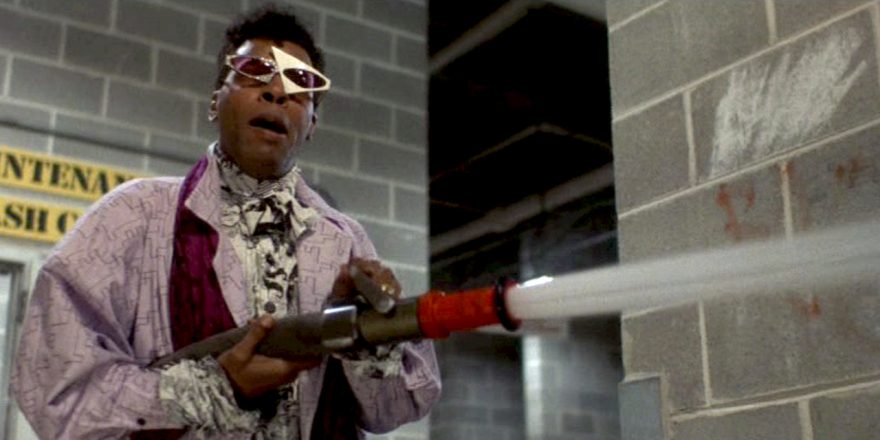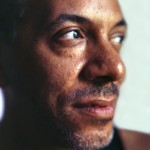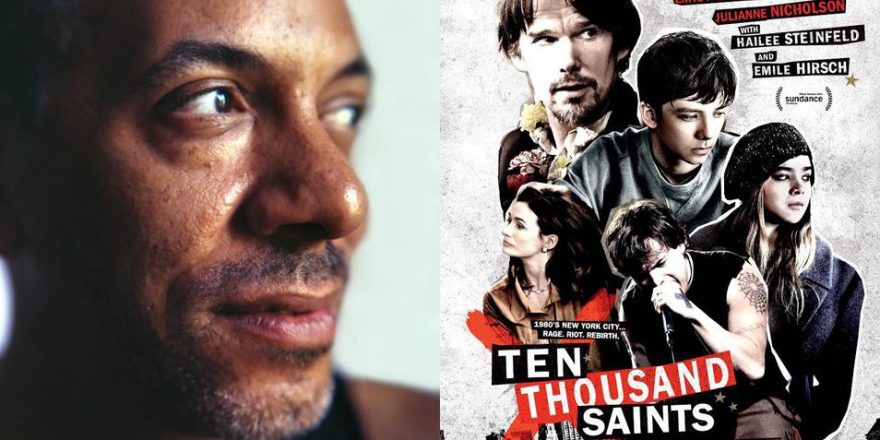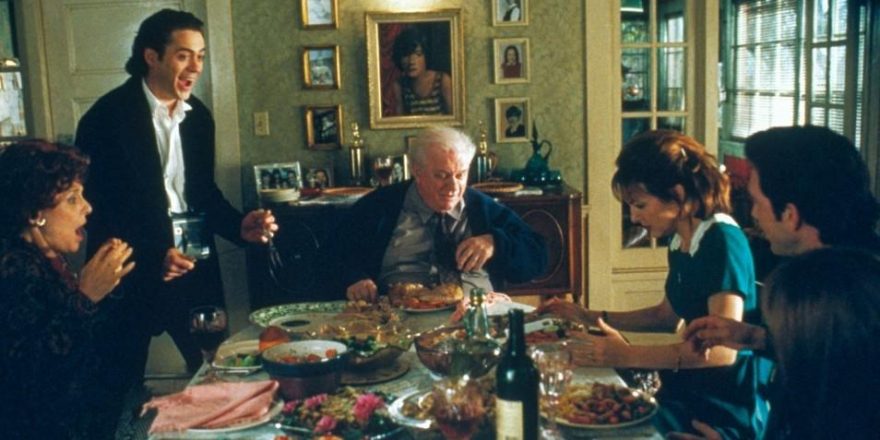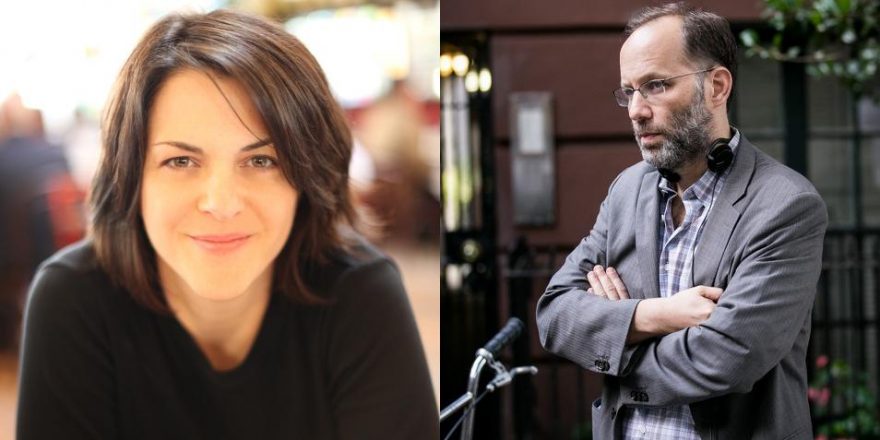There was once a great black actor, Meshach Taylor, a hair younger than the Morgan Freeman generation, the brilliant black heterosexual thespians capable of embracing their feminine side (all that Shakespeare training, perhaps). Meshach played “Hollywood Montrose,” a flamboyant gay window-dresser who befriends a dim straight white boy called Jonathan Switcher (haha!) in a dumber-than-bricks ’80s B-movie, Mannequin. Taylor wasn’t the lead, but provided the only sparkle in a dud film that stood as the most widely seen and appreciated depiction of a gay black character in the same rich era that gave us the sweltering bromance of goofy white “Rowdy” Roddy Piper and brooding black Keith David in John Carpenter’s genius They Live. A decade before Morgan Freeman himself and Brad Pitt would play similar homo-social games in Se7en, it was Taylor alone who held the flame aloft for black gay dudes in cinema. Ugh.
Like all black actors of his day, Taylor was also an accomplished theater performer and about 15 years ago he played the candelabra, Lumière, in Broadway’s boffo Disney musical Beauty and the Beast. At that time, he said to my friend John, also a genius actor of stage and screen but a white guy (they met as stars of The Adventures of Huckleberry Finn, as the Boy and the Negro, respectively), “Yeah, John, it’s a good gig. But I play a mothafuckin’ candleholder and … I don’t have any hands.” The Lumière costume was tricked up to look as much like the cartoon as possible, and Taylor’s arms were locked into the props. Rueful laughter ensued between the old pals. Meshach did not have to say the truth of it all: “It’s the best part in the show available to me. And I don’t have any hands.”
This story haunts me. I tell it in hopes to make it your problem too. I am a filmmaker who is queer, biracial, Jewish, Rasta, black, yet fully versed in cinema history, I want to ruin all your cinematic experiences going forward as they have been ruined for me. ‘Cause this is what watching gay characters and gay films is like when you’re not white – bereft. And it has scant to do with dreck like Mannequin. In cinema, all the gays are boys, and all the boys are white. None are black. In other words, Prince in Under the Cherry Moon is the gayest black character of the ’80s, and in context of that film, he’s heterosexual. American pop culture wouldn’t exist without the inventions and influence of black gay culture. Bob Fosse, who ripped the dance moves and overall vibe from white girl strippers and black gay male culture, to give but one example. But you’ll never see a black gay guy lead of a Fosse film, or a Lumet movie. Cuz who cares about that? Hip-hop is more fun when Andy Samberg satirizes it, and black gayness is safer when Justin Timberlake makes sideways references to it. Even though he’s ripping off Michael Jackson, who in turn, was deeply influenced by the tan drag queens and queer vaudevillians he met on the “Chitlin’ Circuit” with his brothers. That’s nothing to concern oneself about, tho, eh? Just give the proles a run for their money.
How about films by LGBTQ for LGBTQ? They don’t give you black gay men either. Check any list of Queer Movies To Watch before or after Stonewall that inevitably pop up in June. The Kids Are All Right – they sure are! Cuz they ain’t black. Brokeback Mountain – all day and all night, yo! So long as they white! I could list films all day, many of which I admire or love, and not find a black male protag in the bunch. Wasn’t there a black gay guy in The Boys in the Band? Yes, and he did nothing in comparison to the other characters – the white guys. How about RuPaul in But I’m a Cheerleader? Yes, a glorified cameo as a bossy drag mentor who flashes some “You betta work!” wisdom, then vanishes. That’s not a supporting role with a wealth of emotional detail or dramatic impact on par with Beatrice Straight in Network or Robert Downey Jr. in Less Than Zero or even Chris Pratt in Her – still just pulling random titles for your amusement.
There’s no need to do this scientifically cuz black gay male bit parts don’t get a participation trophy for showing up. Cinema – whether it’s high or low, prestige, blockbuster or B – has avoided black gay males in lieu of Everyone Else. It’s a near-complete cinematic erasure. It’s morally indefensible and artistically bankrupt. I submit there isn’t one of those surprisingly-poor-in-hindsight Golden Age Miramax films, from Rounders to Cold Mountain, that wouldn’t be significantly (if not shockingly) higher in quality if one of those characters were black and gay. But the ’90s were a shamefully segregated time in filmmaking, so of course that would never happen.
Now, with the proliferation of g-ddammed superhero movies, where the only plot that matters is The White Man in Tights Will Never Die and We (the white people) Will Prevail, perhaps black gay men never will happen on film. I’ll just be content projecting my queer brown self onto Pam Grier in Jackie Brown, like always. Right? Wrong.
—-//—-
Sidebar: Some of my lovely and brilliant white gay male friends, comrades and community members were outraged about Nick Jonas’ Hollywood handsome, very muscular, publicly hetero white cis guy presence at the New York vigil for Orlando, asking, “Why is he there?” I’ll tell you why. ‘Cause as a Hollywood handsome, very muscular, publicly hetero white cis guy, Nick Jonas presents the exact image you have voted to stand as sole apex object of mainwave gay desire. So for all of those who felt that a white, straight singer using the occasion of the deaths of 49 queer people of color as a chance to plug his album was violent, I consider promoting handsome white straight men as the representation of queerness a violent act too.
You want Frank Ocean (gay black hip-hop star) up there? You want BD Wong (seasoned actor, gay and Asian) up there? You want Wilson Cruz (Latino actor, gay activist) up there? You want Billy Porter (Tony Award winner black divo) up there or Djimon Hounsou (African actor, played a gay guy once)? You want friggin’ Steve Buscemi (straight guy who played gay brilliantly in Parting Glances) up there? You want someone like me up there? Then be and remain aware how each and every time your sharp gay mind and lucrative LGBTQ dollar clicks on, gravitates toward, purchases the magazine cover of, and/or otherwise highlights the Nick Jonases of the world over Everyone Else, then that’s what they gonna give you. Every time you go to a gay party with five black men, two Asians, a dozen cats who may be Latino and 6,295 white guys and think, “Yay, its diverse,” Nick Jonas will rep for you and there he shall stay until you all change.
Friday nights in the ’90s, I’d challenge my pals to a game called Spot the POC!, using photos from the weekly gay bar mag. “Go thru and pick out all the black faces who are not disco diva ladies or men in drag. Find any Latino faces who are not go-go boys, then Asians of any stripe. Now, if your grand total is four or more” – usually due to the genial presence of the aforementioned Wilson Cruz – “I buy the first round.” That was a game I rarely lost and as a result drank far too many bitterly won vodka tonics.
—-//—-
In 1968, Jules Dassin, the legendary white blacklisted noir director of The Naked City and my fave, Night and the City, helped create a bizarre and deeply overlooked black film classic, Uptight, along with Afro-Art legend Ruby Dee, who co-wrote the script, co-produced and played one of the lead roles. It’s an update of John Ford’s Irish political melodrama The Informer, but set in Black Power-era war-torn Cleveland. It’s so badass, the film opens with actual MLK funeral footage over a score by Booker T. and the M.G.s. Uptight is intensely theatrical, desperately heartfelt and completely over-the-top. It has an incredible housing project riot scene that’s usually cut from most versions, ’cause it’s “incendiary.” Throughout it all, the great black and gay thespian Roscoe Lee Browne (one of the James Earl Jones generation) plays “Daisy,” a nasty piece of work who makes big dollars as a police informant while swishing in paisley blouses and jeweled cravats. It’s a delicious part (“Daisy, what do you get for the head of a brother?” “You wanna talk to my accountant?”), and Browne makes Daisy formidable and foul, yet delicately poignant. In an old film filled with great if awkwardly stylized work, it is Browne’s Daisy who stands as the most recognizable person – the one you can picture as a real human being.

Some LGBTQ cinema historians have gotten mad at morally disreputable queer film characters, but who doubts Hannibal is a better role than Clarice? Watching Uptight today, it seems my Queen Grandfather Roscoe Lee Browne is channeling a bit of James Baldwin, a dash of Jason Holliday (the historically significant queen immortalized in Shirley Clarke’s seminal 1967 documentary Portrait of Jason) and whatever dark depths stirred in his own sweet heart, making Daisy #1 with a bullet of Characters I Wish I Had Seen as a Kid. But Uptight was sidelined by the establishment, and it’s only recently that it’s become straightforward to get hold of a copy. However, she exists.
But Meshach Taylor, just a decade ago, he didn’t have any hands.
I write this on my birthday. Today, I restate my goal to make films. Today, I wish to say definitely: I have hands.
Love,
Stephen


